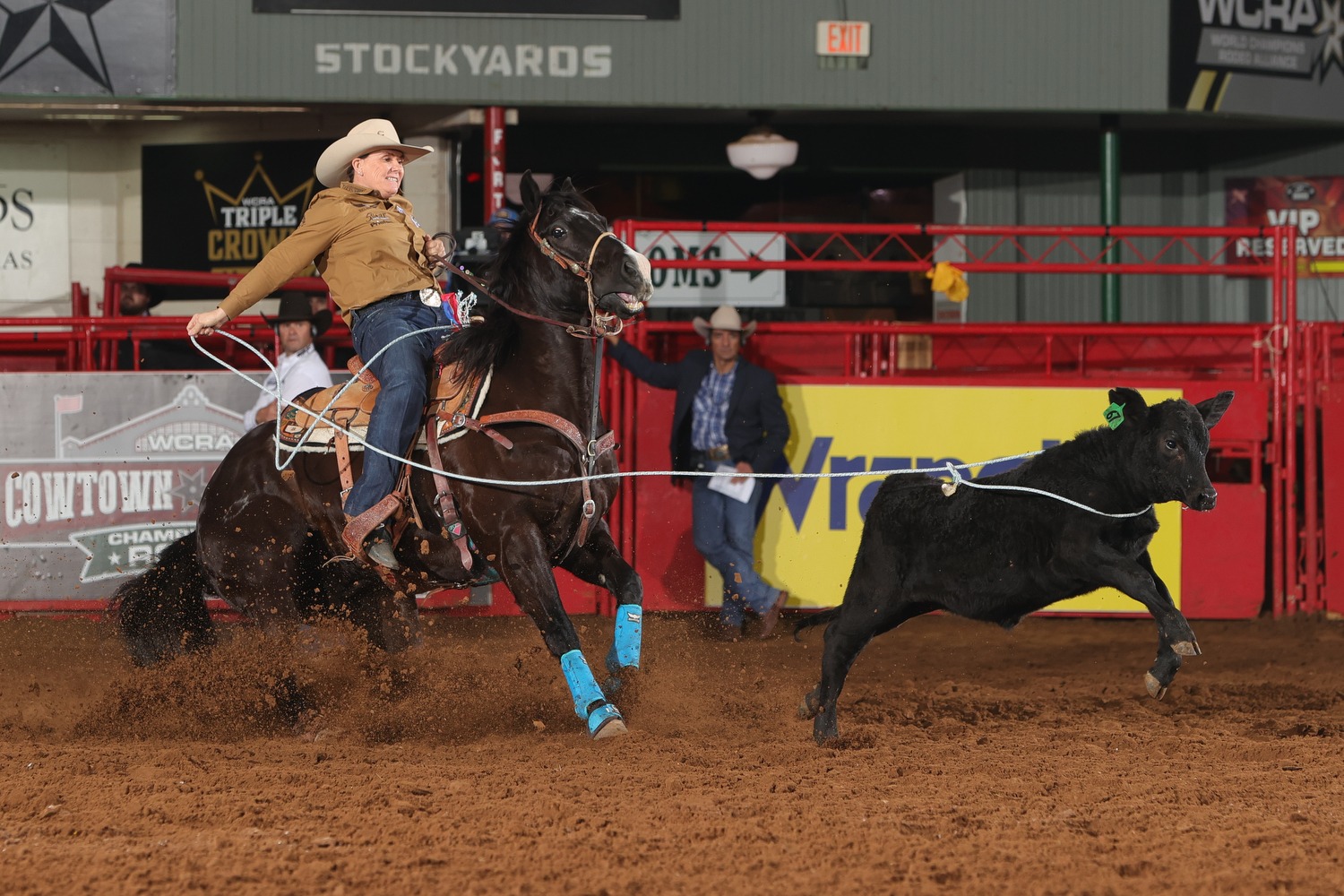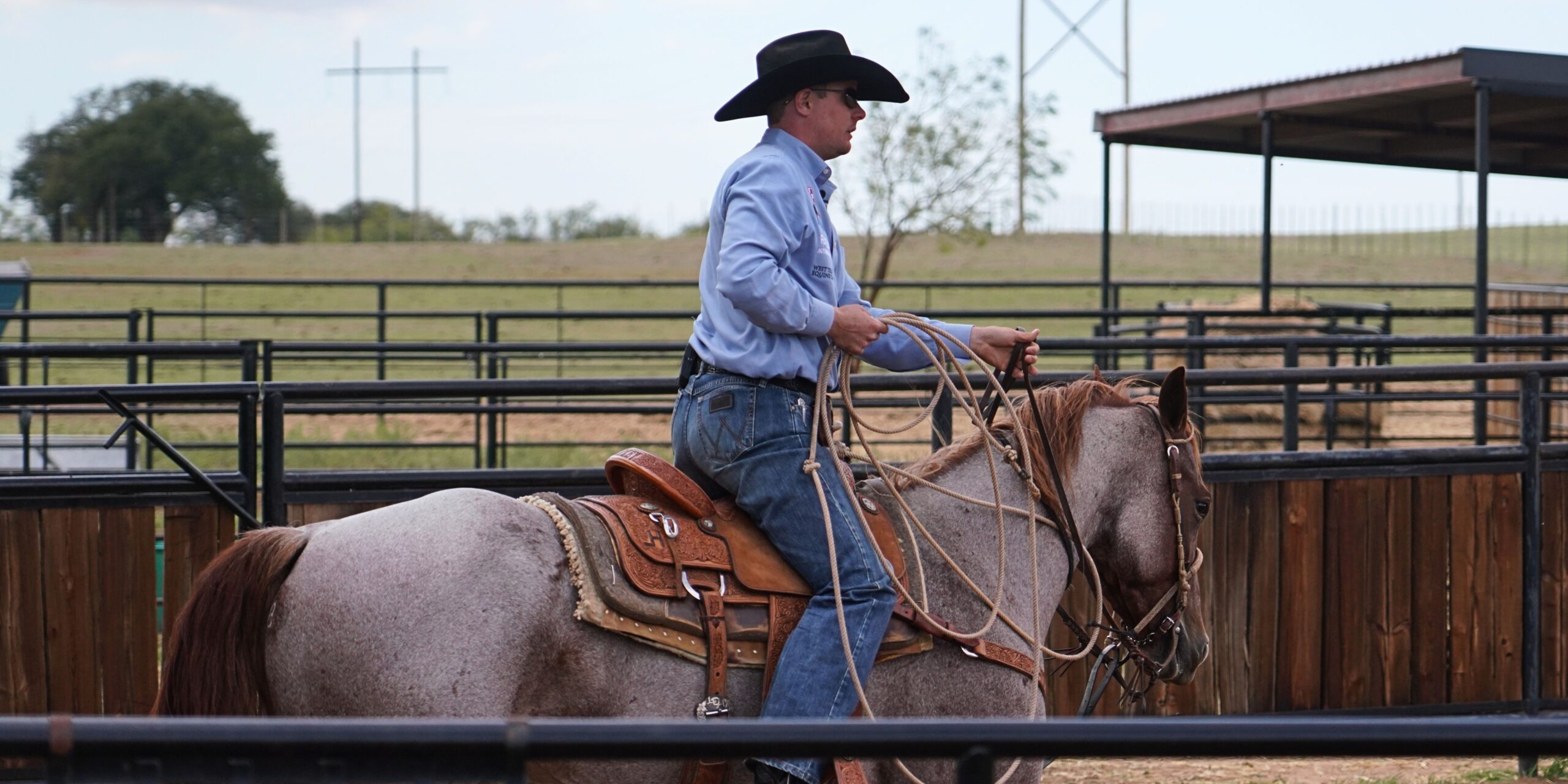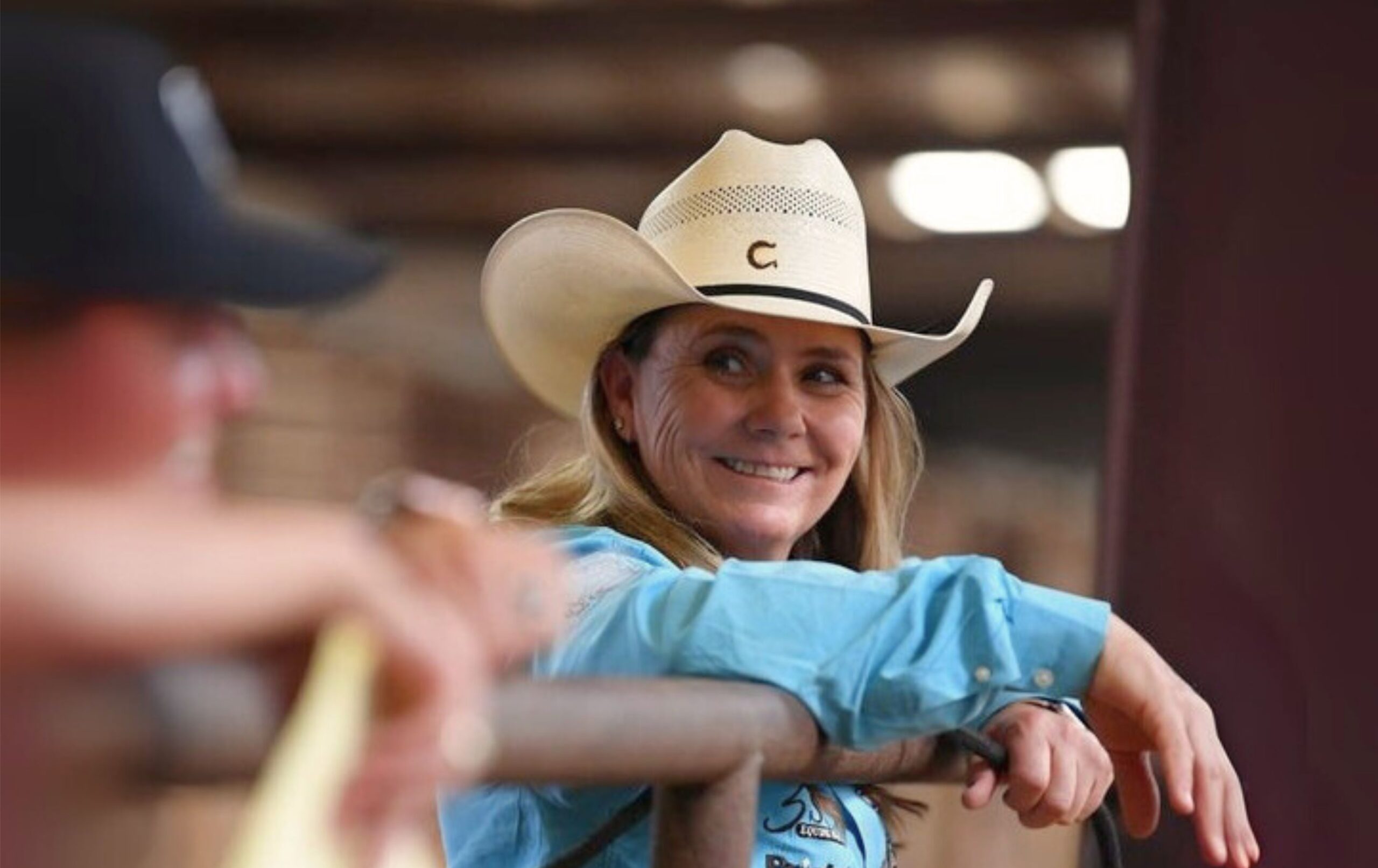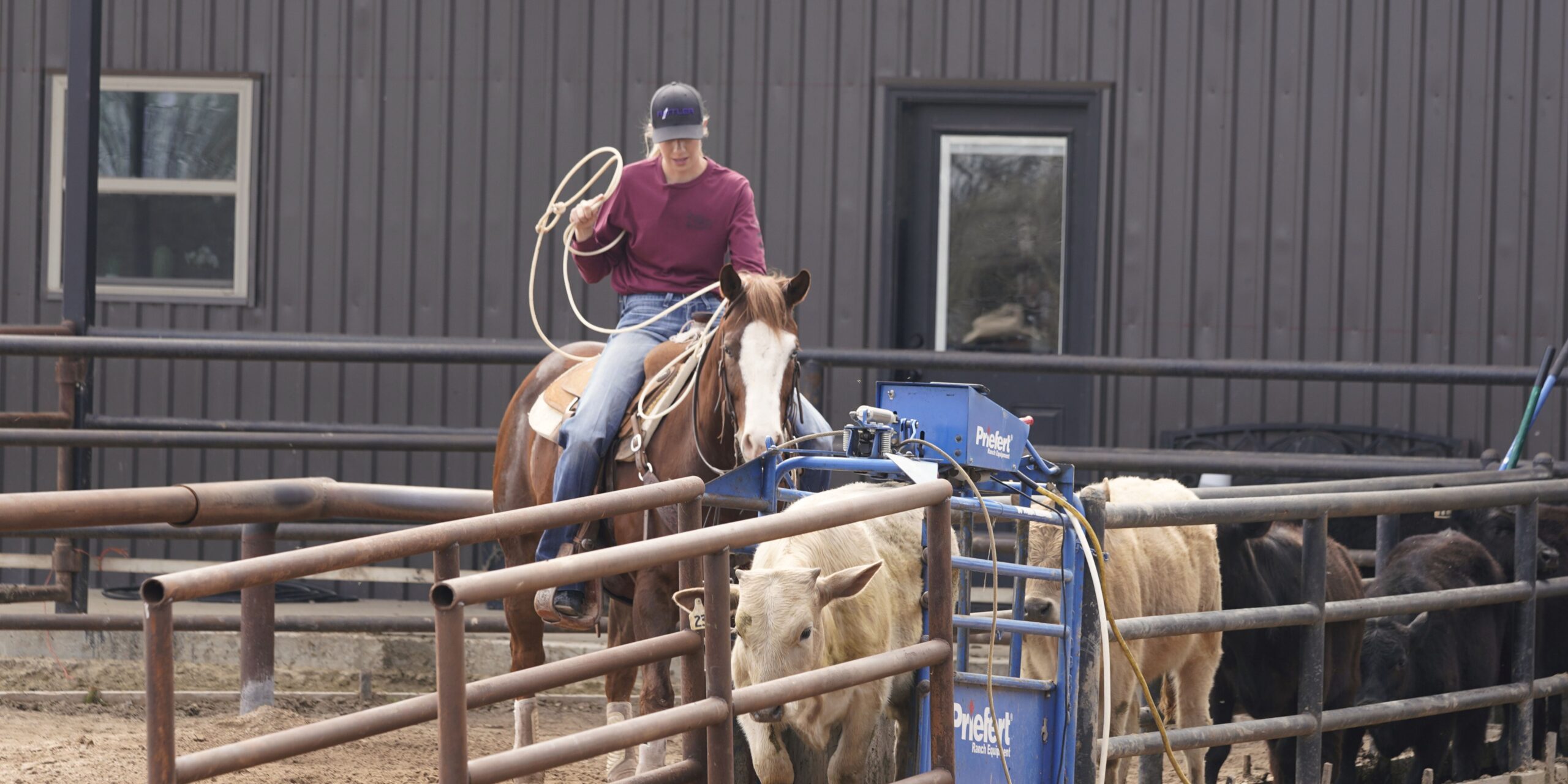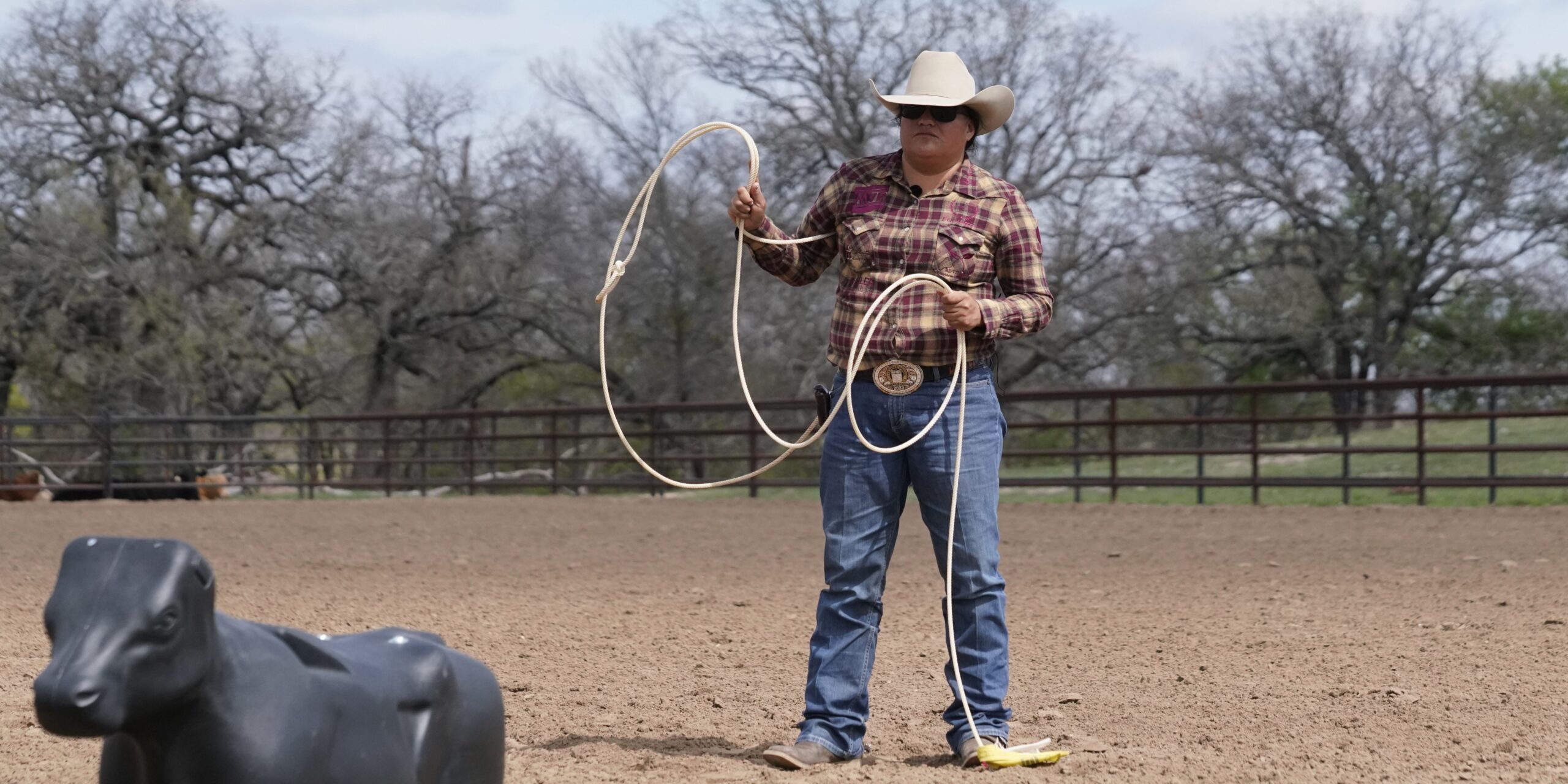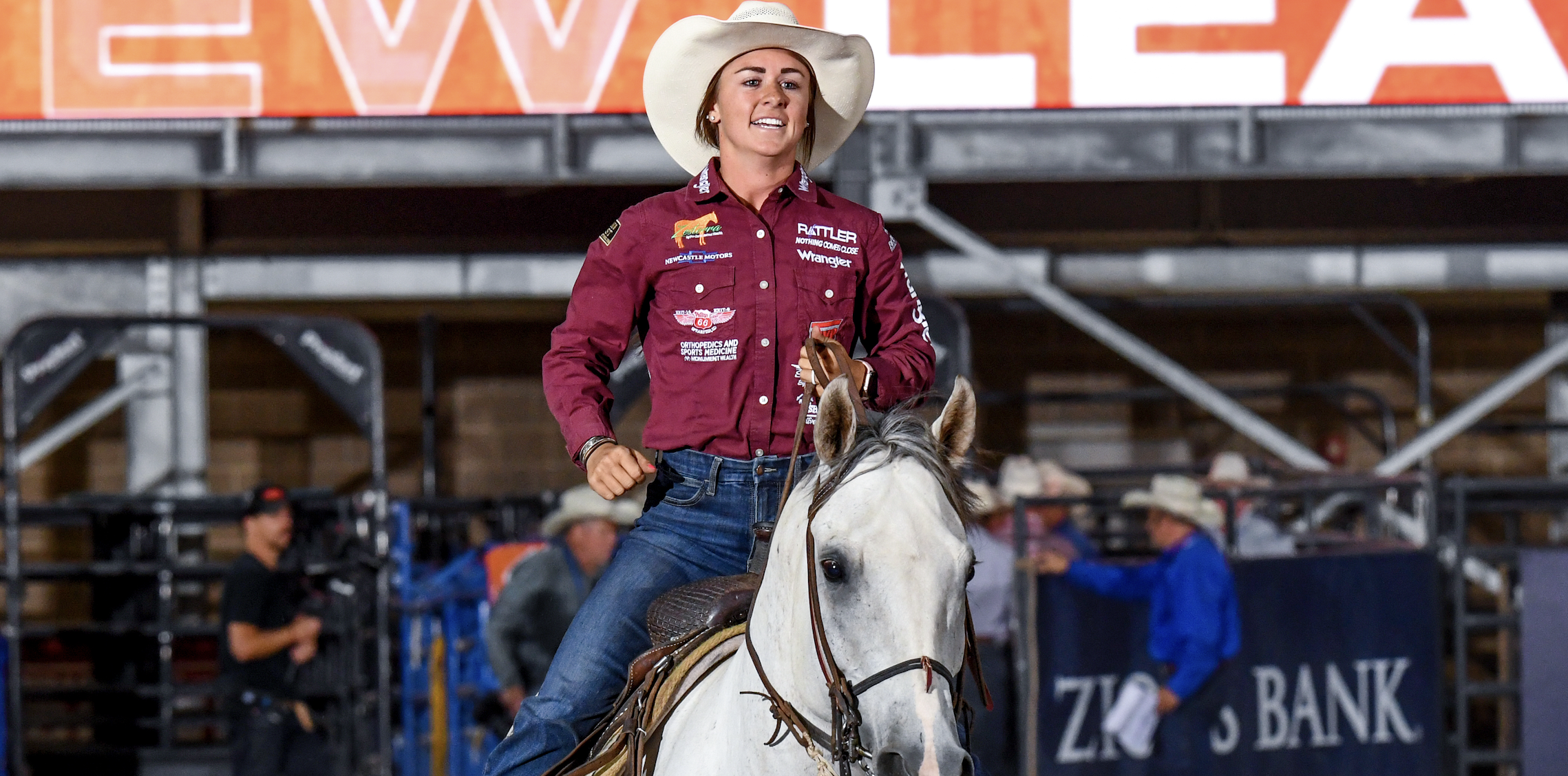Lari Dee Guy broke down how she gets her breakaway horses to stop faster, well-balanced and listening to the rider’s cues with a few simple methods.
In this blog, originally published in the Team Roping Journal, Guy discussed how a horse should stop and what her body should be doing to make that happen. Then she discussed combating two problems that can arise in asking a horse to stop.
Hear from Guy herself, below.
How to Teach a Breakaway Horse to Stop
To do that, I like my horses stopping not on my hand but on my body’s cues. I like to run up to the calf on a looser rein. When I throw my rope, I ask my horses to shorten their strides. They can’t be stopping when I throw my rope. It’s not until I sit down, take my legs off of them and pitch my slack that they should be stopping.
I don’t want to have to be pulling on my horses’ faces to get that stop. I really want them responding to my body. I lope a lot of circles with my legs on my horses’ sides and my butt out of the saddle, just like I’d be doing when I’m roping. When I want them to stop, I sit back in my saddle, taking my legs off of them. They should gather their back end up underneath them, elevate their shoulders, and slide to a stop. I want them doing this when I’m roping at full-speed, too.
Troubleshooting Breakaway Horse Stopping Problems
Anticipation is a problem some breakaway horses encounter in their stops. If horses are anticipating the stop, they’ll stop on their front ends. If they anticipate, I ask them to keep going forward and don’t let them stop. I will get them working with their back ends up underneath them and with their shoulders elevated. When I’m roping, I’ll run up with the reins loose, and when I throw my rope, I’ll collect them up and ask them to shorten their stride. Keeping their shoulders up with my rein hand, I’ll then ask for a whoa as I pitch my slack.
Ducking is another problem some breakaway horses develop. They’ll pop off to the left when the rope is thrown or when they stop. To fix this, I give my horses a lot of rein as we run to the calf, rather than hanging on their mouth trying to keep them straight. The more you hang on a horse that ducks mouth, the harder he will duck when you release the pressure. So I minimize the pressure on their mouths, then as I get ready to rope I bring my left hand up to my right hand. This prevents the horses from bracing against me and ducking off even harder. BRJ





